Hi friends, Thanks for subscribing, reading, spreading the word.
“Go watch Caitlin Clark in person?!?”
That was my text. Wendy and Willie said, “Yes,” and Katherine said, “If I can have popcorn,” so off we went to see the Indiana Fever play the Washington Mystics, and wow, what a game it was, beginning with the scene in the Metro. Fans of all shapes and shades, male and female, young and old, filled trains heading to Washington DC, many wearing t-shirts reading “Clark 22” or “Washington Mystics” or “Everyone Watches Women’s Sports™”1
Normally, the Mystics play in an arena that only holds 4,200, but with Caitlin Clark en route, organizers wisely moved the event to the Capital One Arena, where it sold out with a crowd of 20,711, the largest in WNBA history.
As we exited the Metro and joined the fervor of fans on foot, we had to circumvent fire trucks blocking the streets to accommodate the crowd. I smiled at my peeps: Women who can screw in lightbulbs without standing on chairs. Over time, the proportion of tall women at these games is decreasing as the popularity of women’s basketball increases. Fandom used to be an inside job: mostly former players. Now everyone watches women’s sports.
I asked fans, “Why are you here?”
“We came to see Caitlin Clark in person.”
“Caitlin.”
“Caitlin.”
“Caitlin.”
“Caitlin, obviously, but we just love great basketball.”
“I’m so impressed with what Caitlin Clark is doing for professional women’s sports.”
“We watched the Olympics, then wondered, Why don’t we get to see women athletes more often? Then we learned Caitlin Clark was coming to town.”
Mystics staff gave us each a Mystics bag in celebration of Fan Appreciation Week. Somewhat disloyally, we then scoured the concourse in search of Caitlin Clark t-shirts. “We can’t sell them because we need to support the Mystics,” explained the vendors, surprisingly good-natured about 16,000 or so inquiries.
I still dream about basketball. I played for Stanford, then for a French pro team, then for the New Jersey Gems in the short-lived WBL, the first women’s pro league in this country. I always wear sneakers to games – just in case either team needs a sub.
Willie, who played for East Carolina University in the same prehistoric 1970s, coached girls’ basketball with me at Wakefield High in Arlington, Virginia during the 1995-96 season. That’s how Katherine and I met Willie and Wendy.2
When the Mystics joined the one-year-old WNBA in 1998, the four of us bought Mystics season tickets and stayed through the Nikki McCray, Chamique Holdsclaw, Murriel Page, and Coco Miller years. That first decade, the fan base seemed to consist mostly of lesbians (dressed in ordinary game attire) and nuns (in habits).3 Now, thanks in part to Caitlin, everyone watches women’s sports.4
Once Katherine got settled with her bucket of popcorn and the game began, Caitlin scored two quick three-pointers. After each one, a millepede of fans leapt in unison, arms raised. Caitlin also showed off other superpowers: toying with the ball like a yoyo, delivering the ball to teammates no one else noticed were open. She only played 20 minutes because the Fever had already made the playoffs and the coach wanted to rest the starters. Still, Clark led both teams in assists, with eight.5
“I always found it difficult to dribble and walk at the same time,” confessed the young woman sitting next to me. I commiserated. I was a good shooter but a mediocre dribbler. We marveled at the behind-the-back, between-the-legs artistry almost unheard of in my day but now displayed by many players, not just Caitlin.
Another fan told us, “You four look like basketball players,” which Wendy and Katherine found amusing, since they are not. Willie and I grew a little taller.
During time-outs, little girls had a blast with the Dance Cam, wildly twisting and twirling to earn Jumbotron fame.
In the early Mystics years, there was a Kiss Cam, which, like the Dance Cam, was supposed to offer innocent audience entertainment. But the Kiss Cam would zoom in on random couples, expecting a kiss: cringingly coercive. Worse, the cameras only chose straight couples. In protest, lesbians sitting next to male friends would turn from those men at the last minute, kissing their female partners instead – which apparently upset sponsors. Thankfully, a quarter-century later, several Mystics players are openly lesbian or queer, the team hosts an annual Pride game, and in June, the team tweeted, “Celebrating #Pride this month and every month.”
In last week’s game, players dove for loose balls, their sweaty bodies creating dangerous slick spots on the floor. When refs blew the whistle, teammates helped each other up, then young men wielding special “sweat mops” swiftly and efficiently cleaned the floor to keep the athletes safe.
Am I the only one who finds Mop Men a beautiful sight to behold?
One can only hope the Mop Men perfected this skill at home, in a time-honored family tradition passed down from father to son.
One can also hope that some five-year-olds in the audience, having spent their whole lives attending Mystics games, might be surprised to learn, maybe in a year or two, that not only are men good at mopping, some men can play basketball, too.
The Mystics led for most of the game, then held on, thrillingly, to win 91-90. A funny thing happened toward the end, when the Fever almost caught up. Fans who had arrived to see Caitlin had by then fallen in love with the Mystics, who played well, demonstrating impressive backdoor plays and three-pointers and cross-court passes. Those Clark fans seemed happy when the Mystics won. Caitlin’s rising tide had lifted the Mystics’ boat.
Too bad the Mop Men had not been able to dry the concourse too, because on our way out, I suffered a basketball injury – my first in decades. I slipped on a puddle. Picture a stork striding along confidently until one leg suddenly careens off to the side, dropping the big bird to the floor. Fortunately, nothing was broken or even bruised, but several women gasped and ran to my aid, perhaps inspired by the team support we had just witnessed on the court.
Humbling. How quickly I had fallen, literally, from tall, proud, former player to vulnerable, white-haired elder who might need an ambulance.
I hope you weren’t expecting to learn more about the game itself.
Trust me: You really had to be there in person.
New graphic short story about aging athletes: A Wild Swim: Why Do We Take Foolish Risks? Free for paid subscribers and available on amazon in print and e-book.
Your thoughts? All comments welcome.
Sue Bird, Alex Morgan, and two other women co-founded a company, Togethxr, for the sole purpose of spreading this message, in English and French, on t-shirts and other gear.
One of Wakefield’s players, Michelle Duhart, later helped Purdue and Carolyn Peck win a national championship.
If you’re curious, I could share my theories about this another time.
No one is paying me to say that, or anything else.
This was the final regular-season game. During her first WNBA season, Clark broke the single-game record for assists with 19, the season record for assists with 337, and the record for most assists per game: 8.4. Her 122 three-pointers — the second-most by anyone in any WNBA season — led the league and set one of many rookie records. Playoffs began September 22. The Fever lost to the Sun and play them again on Wednesday, September 25. The Mystics did not make the playoffs.


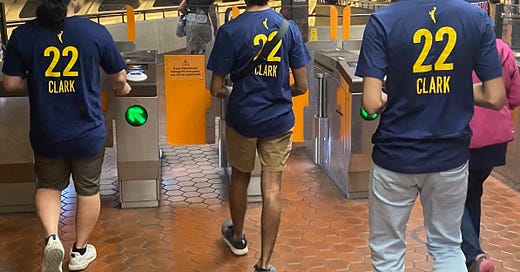



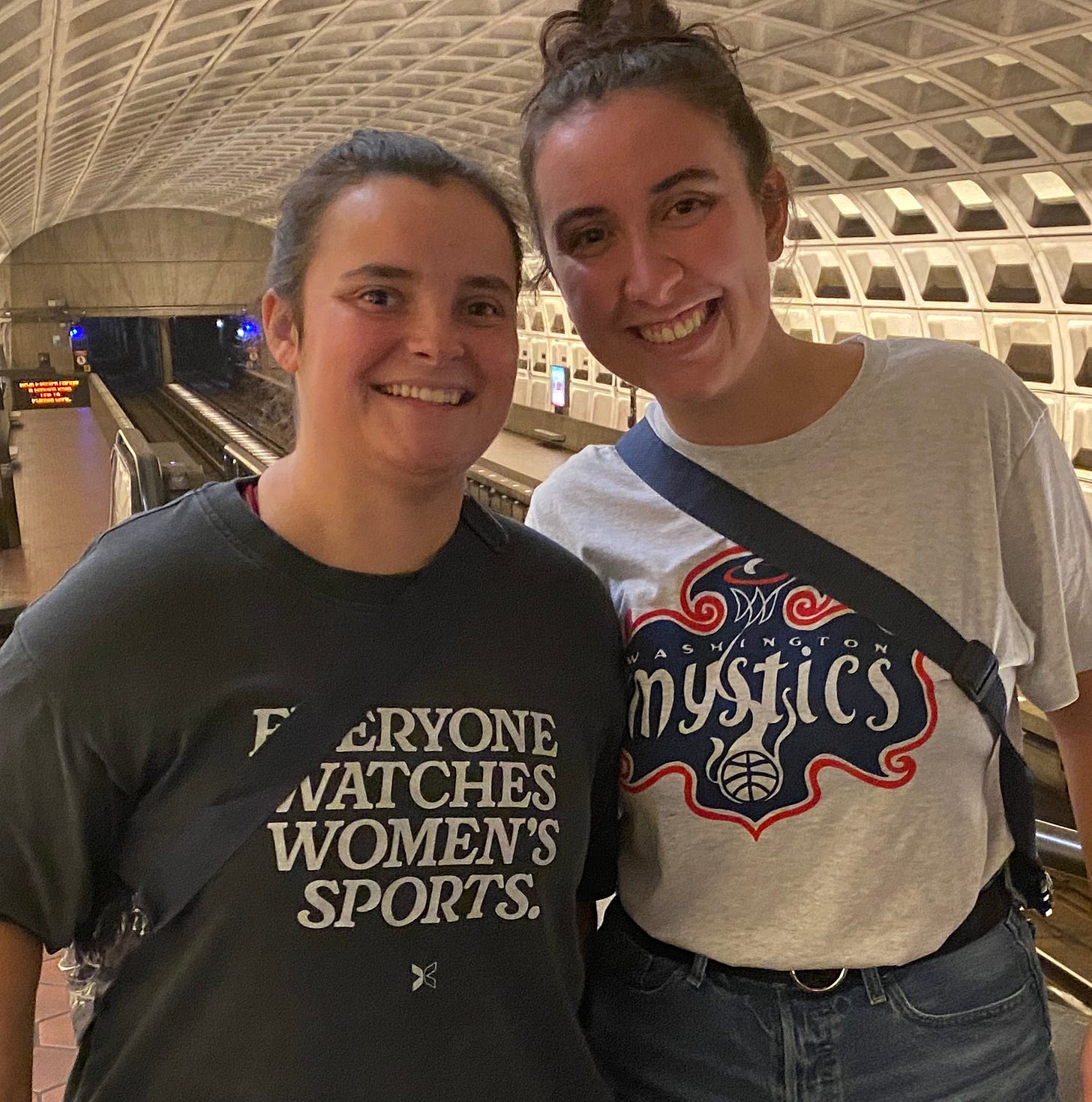
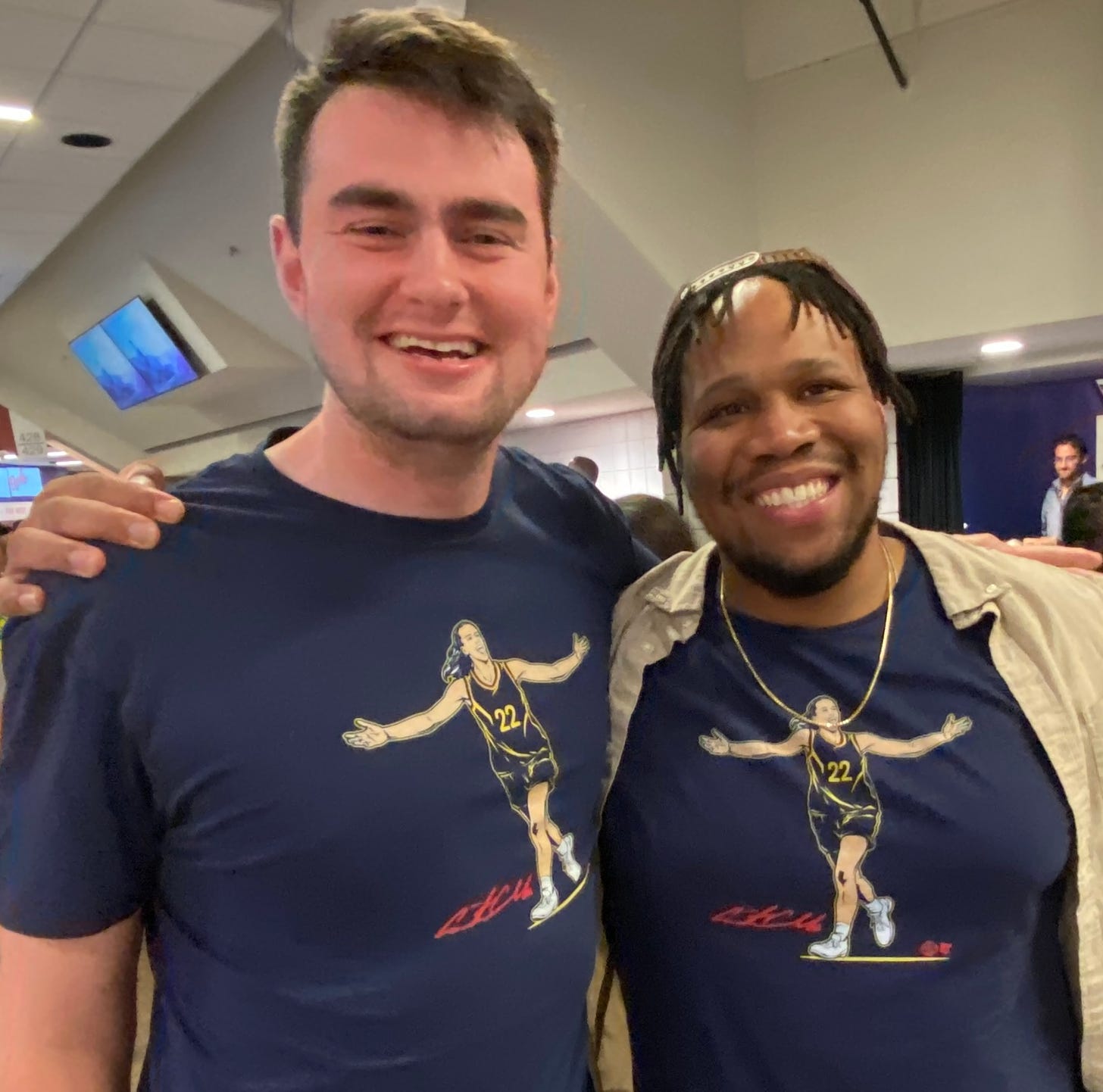
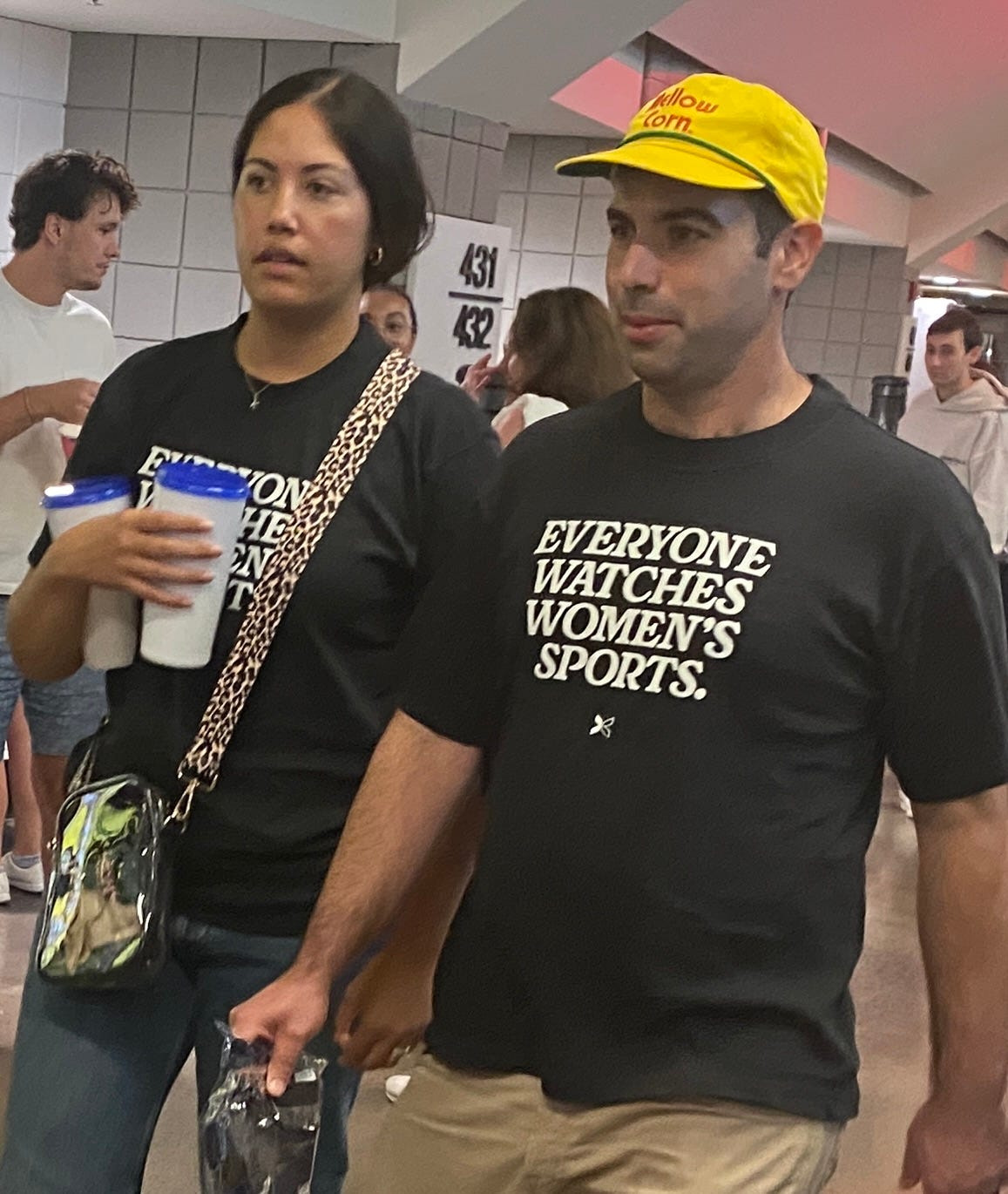
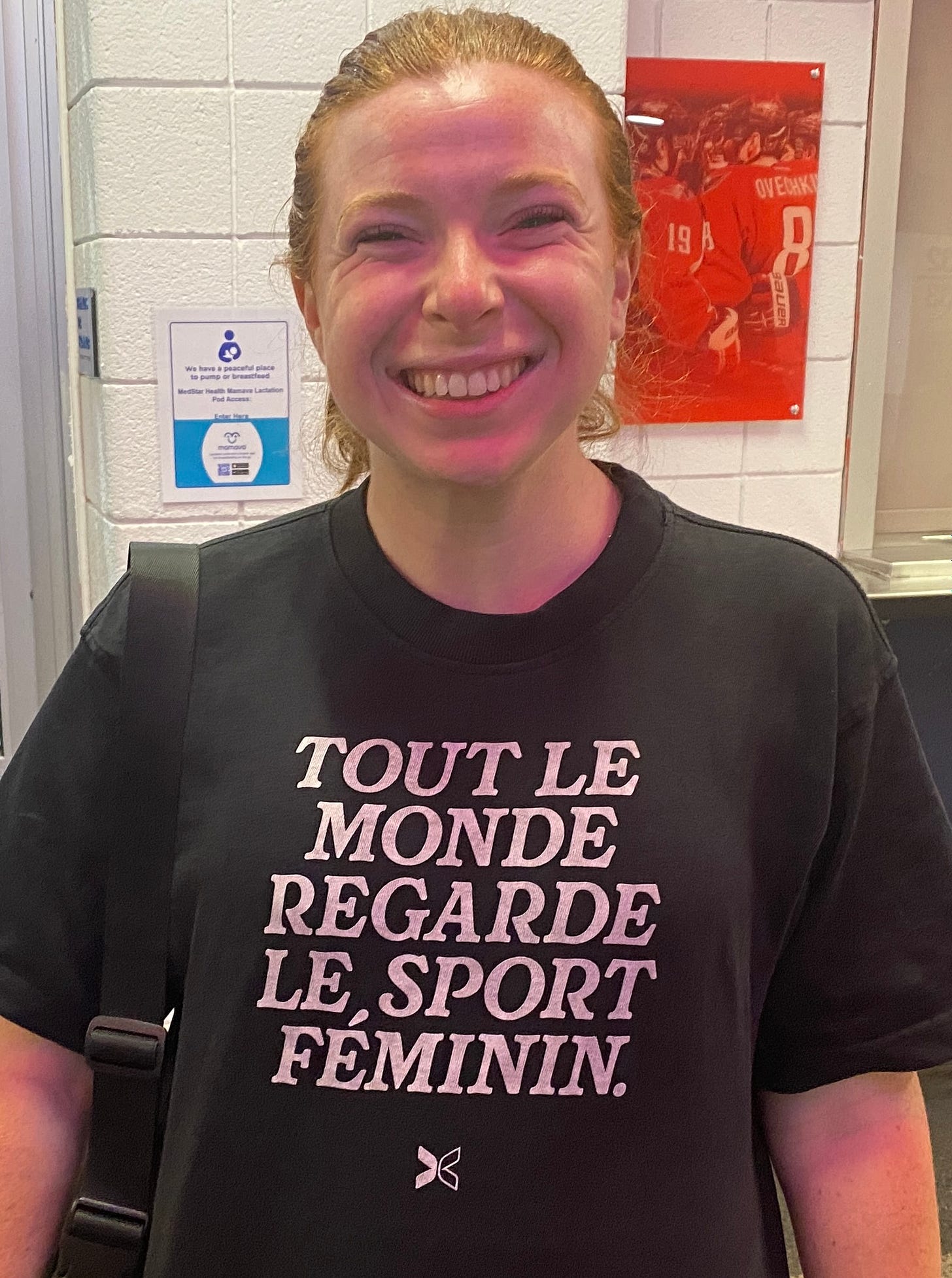
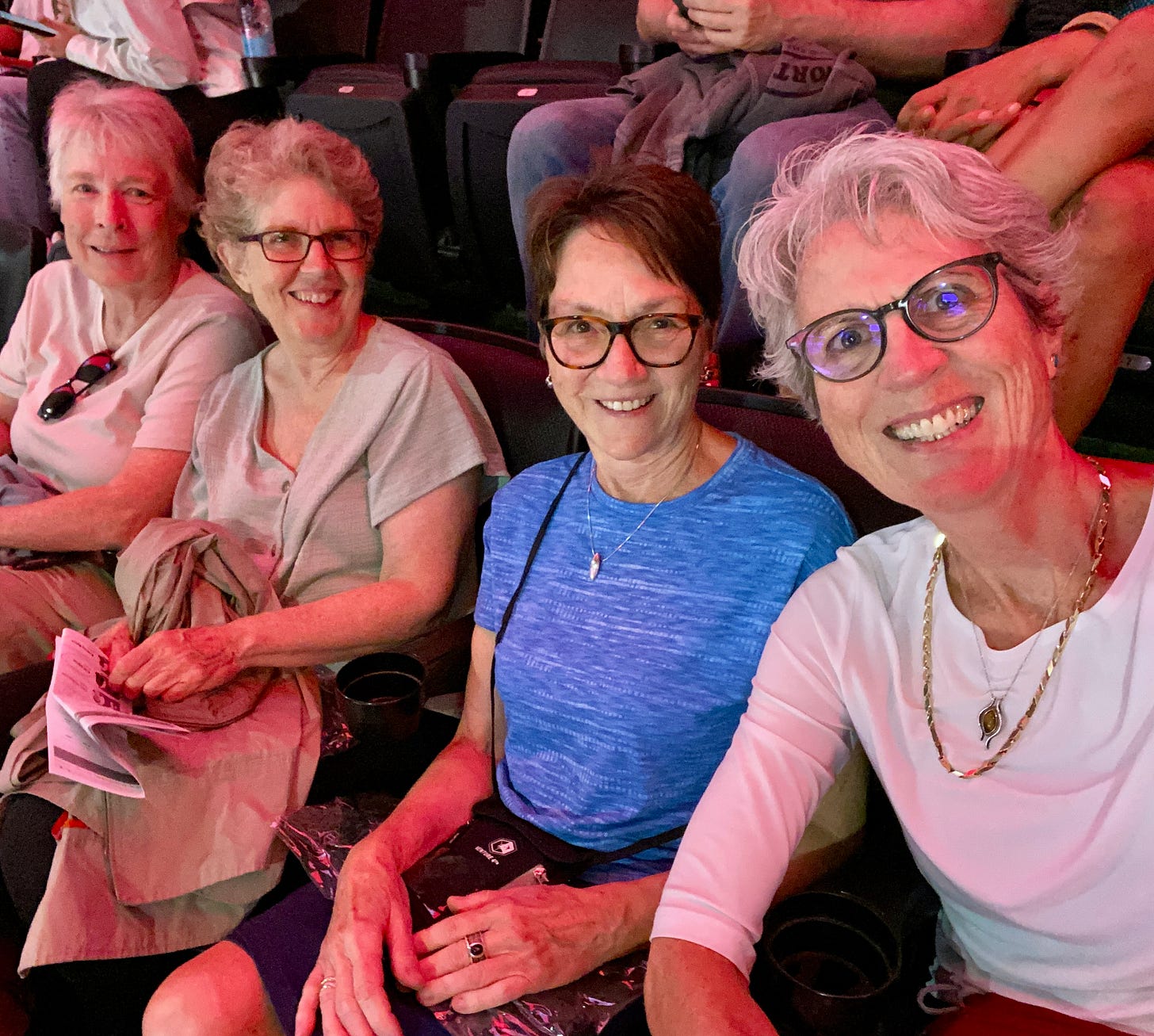
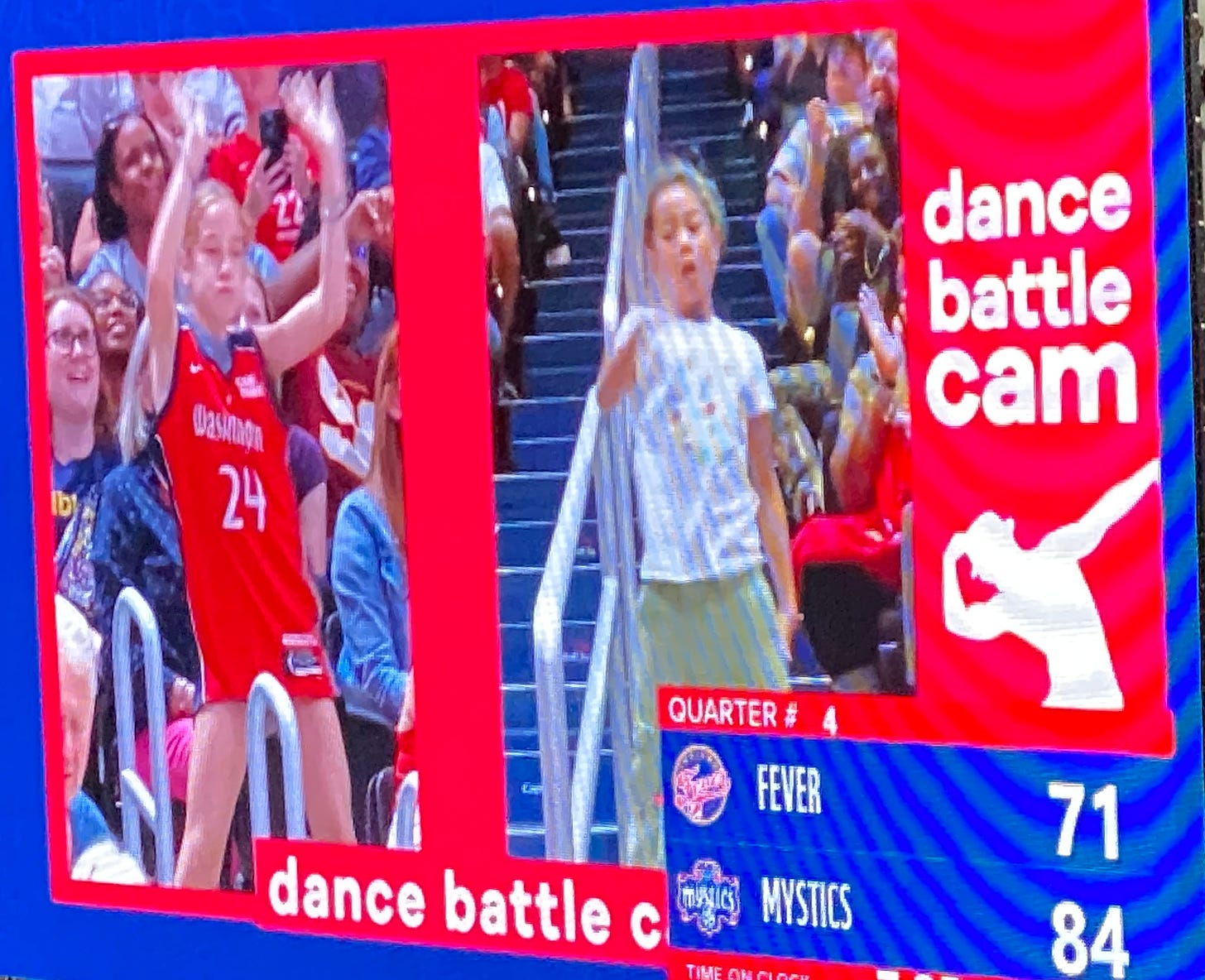
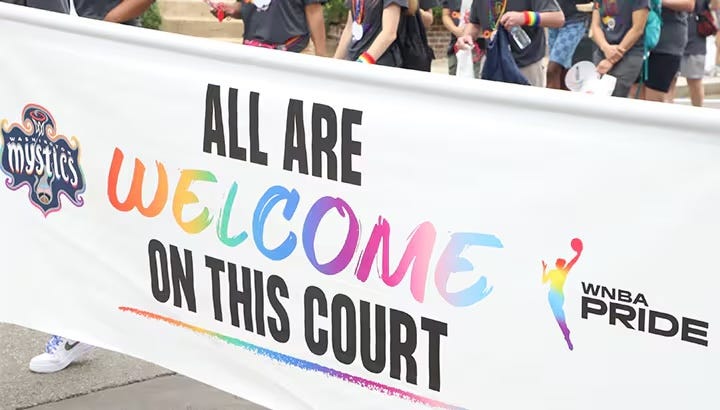
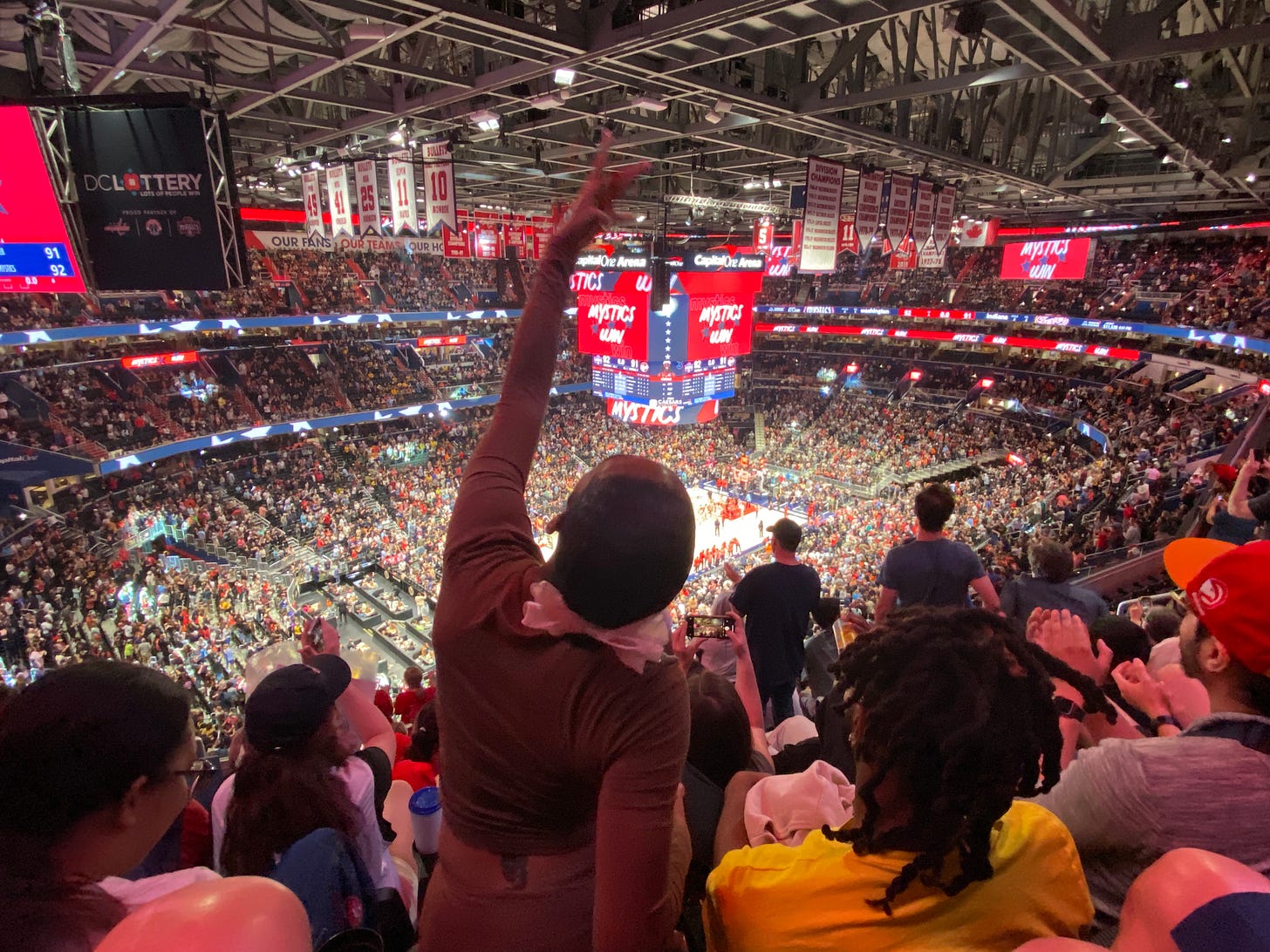
I really enjoyed this story. So much humor, so much energy. I was right there with you. Also, the change in appreciation for women's sports that you describe is truly encouraging. Oh, and like Katherine, my husband would have had me with the promise of popcorn!
Another great article! Love your storytelling. There is so much in each sentence to savor.